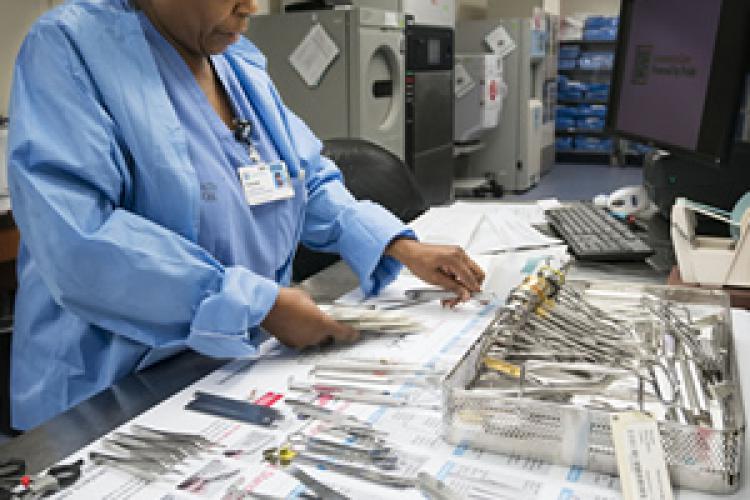
Successful surgery starts nowhere near the operating room. It starts two floors below in a secluded space — the one where sterile instruments come from.
“This is where it all begins,” said Lisa Taite, RN, manager of Sterile Processing at JPS. “We are the backbone of the O.R.”
Surveyors agree. When the O.R.s at JPS went under The Joint Commission’s microscope last month, a surveyor declared Sterile Processing “a hidden jewel at JPS,” noting “very tight processes,” and adding, “kudos to the team.”
While much of the attention on preventing surgical site infections (SSIs) is focused on what happens in the O.R., what happens in Sterile Processing is vital.
After 16 years as an O.R. nurse, Taite became captivated by Sterile Processing “when I came down here and saw how hard these guys work,” she said, referring to the 33 technicians who ensure every surgical instrument is sterile, working properly and arranged in meticulous order on trays to be delivered to the O.R. Most are certified sterile processing technicians.
Each tray holds between 90 and 130 instruments, depending on the type of surgical procedure to be performed. The sterile processing techs at JPS put together an average of 156 trays every day — 170 on a busy day — preparing as many as 20,000 instruments.
What makes a good sterile processing tech? “Someone who cares,” said Taite. “Someone who loves what they do. You have to think about each instrument as though ‘this could be used on my mom or my dad.’”
